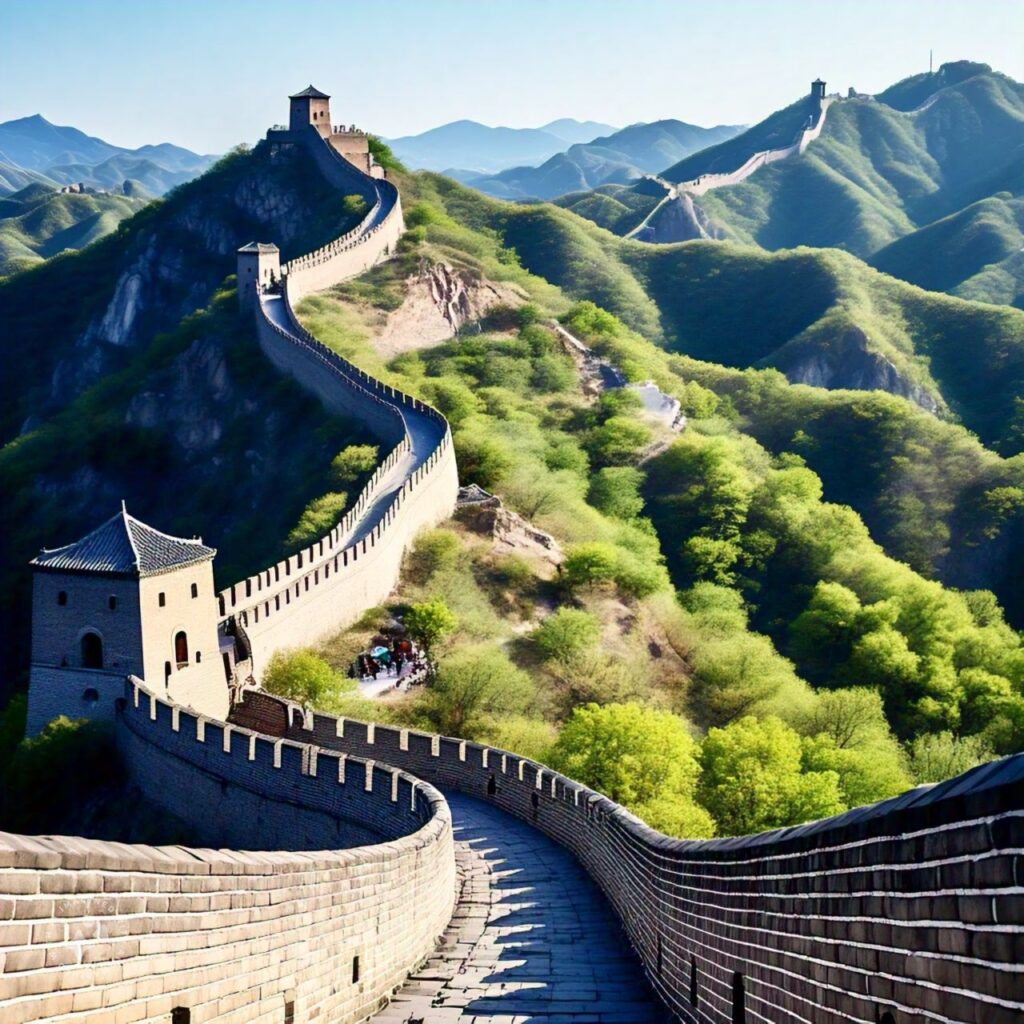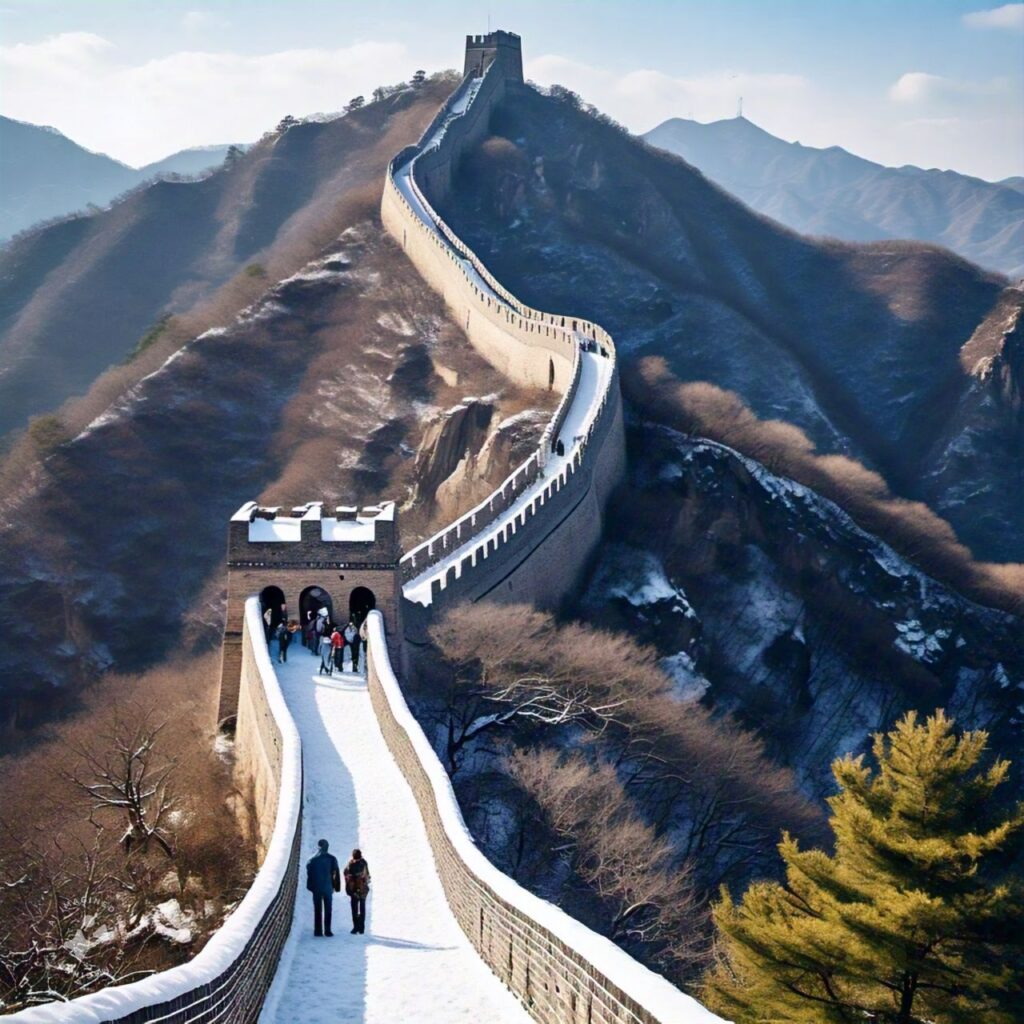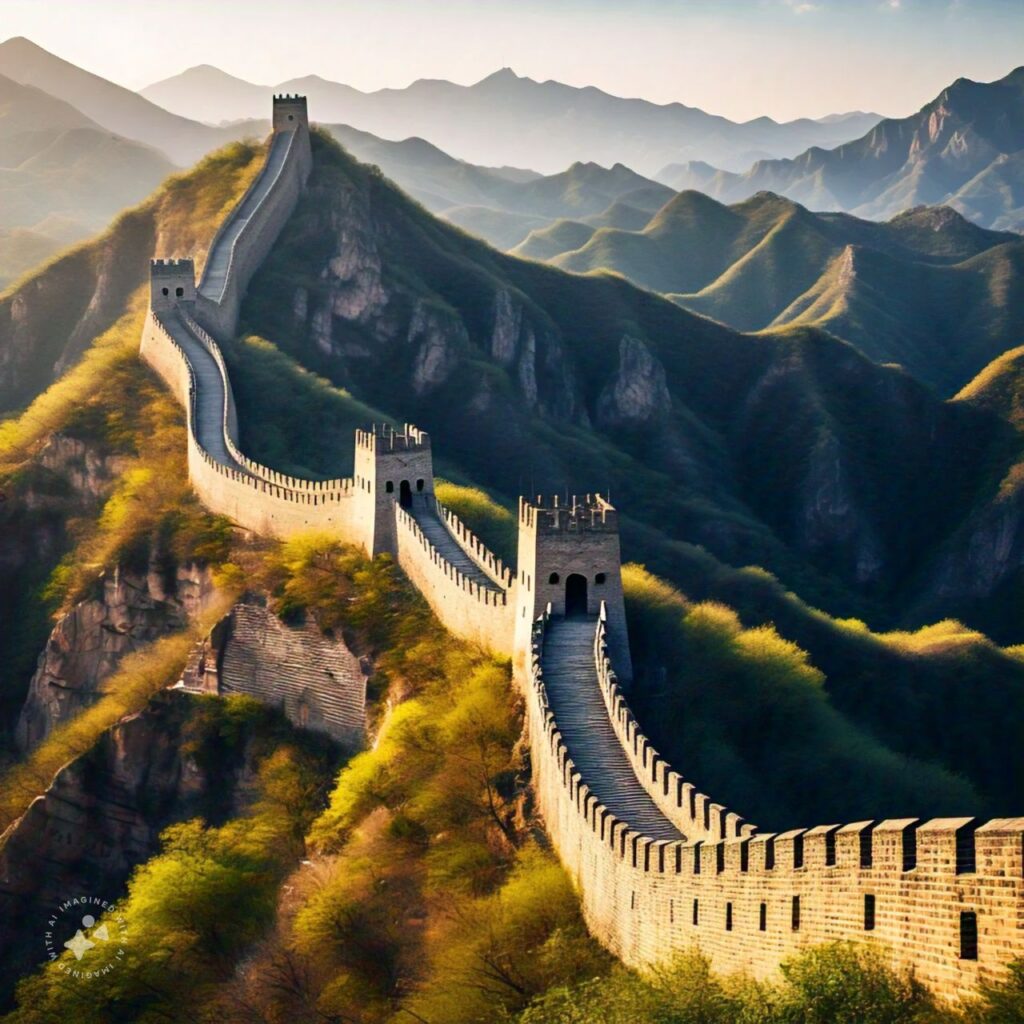The Great Wall of China, one of the most iconic landmarks in the world, stretches over 13,000 miles across northern China, weaving through rugged mountains, deserts, and plains. It is not only an architectural marvel but also a symbol of China’s rich history, military strategy, and determination. Spanning more than two millennia, this colossal structure stands as a testament to human ingenuity, resilience, and the lengths to which ancient civilizations went to protect their people.

In this article, we will explore the history, construction, and significance of the Great Wall, as well as its enduring legacy in the modern world.
A Monument to Ancient China’s Strategic Vision
The construction of the Great Wall began in the 7th century BCE during the Warring States period when various Chinese states built walls to defend their territories. However, it was during the Qin Dynasty (221–206 BCE) that Emperor Qin Shi Huang unified these walls into one continuous fortification. The emperor, seeking to protect the newly formed Qin Empire from the nomadic tribes of the north, such as the Xiongnu, saw the wall as a key element of national defense.
The wall that we recognize today was primarily built during the Ming Dynasty (1368–1644), following decades of invasions from Mongol and other northern tribes. It was during this period that the Great Wall reached its most impressive and fortified state. The wall’s purpose evolved from simple border protection to a complex system of defense, communication, and control of trade routes.
The Architecture of the Great Wall: Engineering Genius
The construction of the Great Wall is a remarkable feat of ancient engineering. The wall was not built all at once but in stages over centuries, with various dynasties adding to and improving the structure. It is made from a range of materials, depending on the local geography—earth, wood, brick, and stone were commonly used. In mountainous regions, stone and brick were used to create more durable sections, while in the more arid northern areas, mud bricks were often employed.
The Great Wall’s design varies, with some sections consisting of a simple, low wall, while others feature elaborate defensive structures such as watchtowers, battlements, and signal fires. Watchtowers were strategically placed at intervals, allowing soldiers to signal one another in case of an enemy attack. The communication system, combined with the wall’s formidable height and strength, made it an effective defense mechanism.
One of the most impressive features of the Great Wall is its ability to blend into the natural landscape. The wall follows the contours of the mountains, utilizing the terrain for added protection. This harmony between human ingenuity and nature allowed the wall to remain a durable and formidable structure for centuries.

The Great Wall’s Strategic Importance
The Great Wall was not merely a physical barrier; it played a crucial role in China’s military strategy. The wall served as a defense against invading nomadic tribes from the north, most notably the Mongols. It provided early warning systems through watchtowers and beacon fires, allowing soldiers to prepare for attacks.
Moreover, the Great Wall was used to control migration, smuggling, and trade along the Silk Road. It acted as a frontier for the Chinese empire, allowing them to regulate the movement of goods and people, thus preserving the stability of the empire.
In addition to its defensive role, the wall also had a psychological impact. The sheer scale and presence of the wall served as a deterrent to invaders, showcasing China’s might and the determination of its rulers to protect their civilization from foreign threats.
The Ming Dynasty: The Golden Age of the Great Wall
The most well-preserved sections of the Great Wall are from the Ming Dynasty (1368–1644). During this period, the wall was fortified and expanded to protect against the Mongol invasions that had previously toppled the Yuan Dynasty. The Ming rulers invested heavily in the wall’s construction, improving its design with stronger materials, and creating a sophisticated military system to support it.
The wall’s design during the Ming period was far more advanced than earlier iterations, featuring watchtowers every 500 to 1,000 feet, and walls that were often reinforced with brick and stone. The Ming Great Wall also included gates, which were heavily fortified and guarded. These gates allowed for better control of movement in and out of the empire.
The success of the Ming Dynasty’s fortifications is evident in the survival of many sections of the wall today, making it a prime attraction for tourists and scholars alike.
Cultural Significance and Legacy
Beyond its military function, the Great Wall holds deep cultural and symbolic significance for the Chinese people. It represents the perseverance and determination of a civilization that sought to protect its heritage, culture, and people. Over the centuries, the Great Wall became a symbol of national unity, embodying the strength and resilience of China.
The phrase “Great Wall” has entered the global lexicon as a metaphor for overcoming challenges and facing adversity. It represents both a literal and figurative boundary, one that requires great effort to surmount. The wall is also a cultural landmark, with countless legends, poems, and stories passed down through generations, adding to its mythic status.
The Great Wall’s impact extends beyond China. It has become a symbol of Chinese identity and a key aspect of China’s national pride. The wall is also a major draw for international tourists, who come from all over the world to experience its grandeur and learn about its history.

Conservation Challenges and Preservation Efforts
Despite its immense cultural and historical importance, the Great Wall of China faces significant conservation challenges. Due to its vast length and exposure to the elements, sections of the wall have deteriorated over time. Natural erosion, human encroachment, and tourism have all taken their toll on the wall’s integrity.
In response, the Chinese government and various conservation organizations have taken steps to preserve the wall, especially its most iconic sections near Beijing. Preservation efforts focus on stabilizing the wall, protecting it from further damage, and ensuring that it can be enjoyed by future generations without compromising its historical value.
However, there are debates around conservation methods, with some advocating for minimal intervention to retain the wall’s authentic, weathered appearance, while others push for extensive restoration to ensure its longevity.
The Great Wall Today: A World Heritage Site
In 1987, the Great Wall of China was designated as a UNESCO World Heritage Site, recognizing its cultural significance and historical value. Today, the wall continues to be one of China’s most visited tourist attractions, drawing millions of visitors annually. Tourists can explore various sections of the wall, including the popular Badaling and Mutianyu sections, which are well-preserved and accessible to visitors.
The Great Wall has also become a symbol of China’s modernization and its place on the world stage. In recent years, efforts have been made to promote sustainable tourism, ensuring that visitors can appreciate the wall’s majesty without contributing to its degradation.
Conclusion: A Timeless Wonder of the World
The Great Wall of China stands as a testament to human ingenuity, perseverance, and the indomitable spirit of the Chinese people. Its vast scale, intricate design, and strategic importance make it one of the most remarkable feats of engineering in history. While it may no longer serve as a military defense, the Great Wall continues to serve as a bridge between China’s ancient past and its modern identity.
As both a historical and cultural icon, the Great Wall of China will undoubtedly continue to inspire awe for generations to come, standing tall as one of the most impressive and enduring symbols of human achievement.
